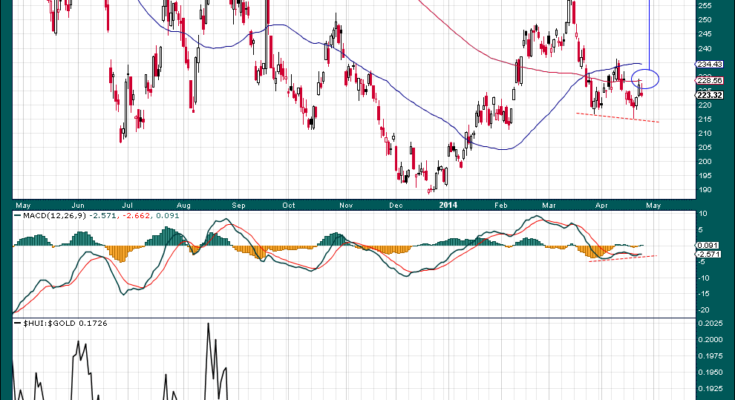A Brief Technical Update
This is a brief addendum to our recent update on the gold sector. Since then, a few interesting things have happened. Initially, gold stocks bounced from the 61.8% retracement level of the preceding rally in spite of the fact that gold and silver weakened further. The action reversed however on Thursday, with gold and silver bouncing, while precious metals shares lost some ground again. The HUI failed at the 200 day moving average, and it remains to be seen if it once again turns into an impenetrable barrier (we believe it won’t). The HUI-gold ratio has strengthened a bit recently. Note also the divergence between the HUI and the ratio that has developed at the most recent low.

HUI and HUI-gold ratio – divergence at the recent lows – click to enlarge.

HUI with Fibonacci retracement levels of the December-March rally – click to enlarge.
If the HUI can overcome both the 200 and 50 dma’s, it would be a strong sign that the recent lows represented a short term turning point. We believe this is actually a likely outcome, but this is obviously just a hunch at this point. Â
Short term support in gold and silver has also held so far. In fact, recent attempts to break below these short term lateral support zones have failed and produced two inverted hammer candles in a row. From a purely technical perspective this would certainly be considered as short term positive, but there is a fly in the ointment. It is possible that Thursday’s reversal was triggered by news of the deteriorating situation in the Eastern Ukraine, which provoked some Russian saber rattling and renewed sanction threats from the US. Any moves in gold triggered by geopolitical news are as a rule untrustworthy, but the fact that the bounce started from an obvious support level mitigates this aspect a bit.
It should also be mentioned that GOFO (gold forward rate) has recently turned negative again, which traditionally tends to support the gold price. This has not as much weight as it would have if short term dollar interest rates were higher than they are, but per experience it is usually nevertheless a supportive factor.

